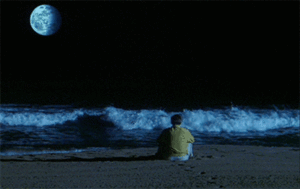32294
Chemistry
Beschreibung
Modulinformationen
Beschreibung
Keine Merkmale angegeben
Mehr sehen
Weniger sehen
Atoms.
They're the smallest part of an element that can exist.
All substances are made from atoms.
Atoms are very small and typically have an atomic radius of about 1 x 10 (to the power of 23)
Elements
An element is a substance that contains only one sort of atom.
There are approximately 115 known elements.
Compounds
Compounds are substances that contain atoms of two or more elements which are chemically combined
Most substances are compounds.
Compounds are represented by a combination of numbers and chemical symbols, which is known as a chemical formula.
Compounds can only be separated into their component elements by chemical reactions or electrolysis.
Mixtures
Mixtures consist of two or more elements or compounds which are not chemically combined.
The components of a mixture retain their own properties and behaviours.
Mixtures can be separated by physical processes and do not require chemical reactions for separation.
Alloys
Alloys are mixtures that contain a metal and at least one other element.
The added element in alloys disturbs the regular arrangement of the metal atoms so the layers do not slide over each other as easily.
Alloys are usually stronger and harder than pure metals.
Ions
Ions are atoms that gain or lose electrons.
Metal atoms, such as sodium (Na), lose electrons to become positively charged ions.
Non-metal atoms, such as fluorine (F), gain electrons to become negatively charged ions.
Isotopes
Isotopes of an element have the same number of protons and electrons, but a different amount of neutrons.
In other words, they have the same atomic number, but a different mass number.
Beschreibung
Keine Merkmale angegeben
Mehr sehen
Weniger sehen
Atoms contain three types of subatomic particle: Protons, Neutrons, and Electrons.
Protons have a mass of 1 and are positively charged.
Neutrons have a mass of 1 and have no overall charge.
Electrons have a mass that is almost 0 and are positively charged.
Because atoms have an equal amount of protons and neutrons, they usually have no overall charge. I.e. The positively charged protons and uncharged neutrons cancel each other out.
All atoms of a particular element have the same number of protons. Atoms of different elements have different numbers of protons. The number of protons in an atom is called the 'atomic number'.
The sum of an atom's protons and neutrons is its 'mass number'.
Beschreibung
Keine Merkmale angegeben
Mehr sehen
Weniger sehen
1898, Thomson
Thomson discovered the existence of the subatomic particles called electrons.
This meant that the atomic model had to be changed to include them, so Thomson created the plum-pudding model.
This model depicted tiny, negatively charged electrons floating in a sea of positive charge.
1911, Rutherford
Rutherford concluded that the positive charge in an atom must be concentrated in a small area, which he names the nucleus.
The resulting model from this was called the 'nuclear model'.
He also concluded that atoms must be mostly empty space.
1913, Bohr
Bohr concluded that electrons, to avoid spiralling inwards, must orbit the nucleus at specific distances.
This lead to the proposition of shells.
He created the 'atomic model'
1932, Chadwick
Chadwick discovered particles with no charge and named them neutrons.
He said that they're also found in the nucleus.
He created the 'modern atomic model' which depicts the electrons moving about the nucleus in a cloud.
It is impossible to tell where an electron is at any given time, and it is impossible to predict where it will be.
Beschreibung
Keine Merkmale angegeben
Mehr sehen
Weniger sehen
Filtration
It is used to separate soluble solids (such as salt) from insoluble solids (such as sand).
Crystallisation
It is used to obtain a soluble solid (such as salt) from a solution (such as salty water).
Simple distillation
It is used to obtain a solvent from a solution
Fractional distillation
It is used to separate mixtures in which the components have different boiling points.
Chromatography
It is used to separate the different soluble, coloured components of a mixture.
Beschreibung
Keine Merkmale angegeben
Mehr sehen
Weniger sehen
1864, Newlands
1869, Mendeleev
Group 0, Noble Gases
Group 7, Halogens
Group 1, Alkali Metals
Group 3, Metals
Beschreibung
Keine Merkmale angegeben
Mehr sehen
Weniger sehen
Ionic bonding
Ionic compounds
Covalent bonding
Covalent compounds
Metallic bonding
Metallic compounds

 durch
durch
